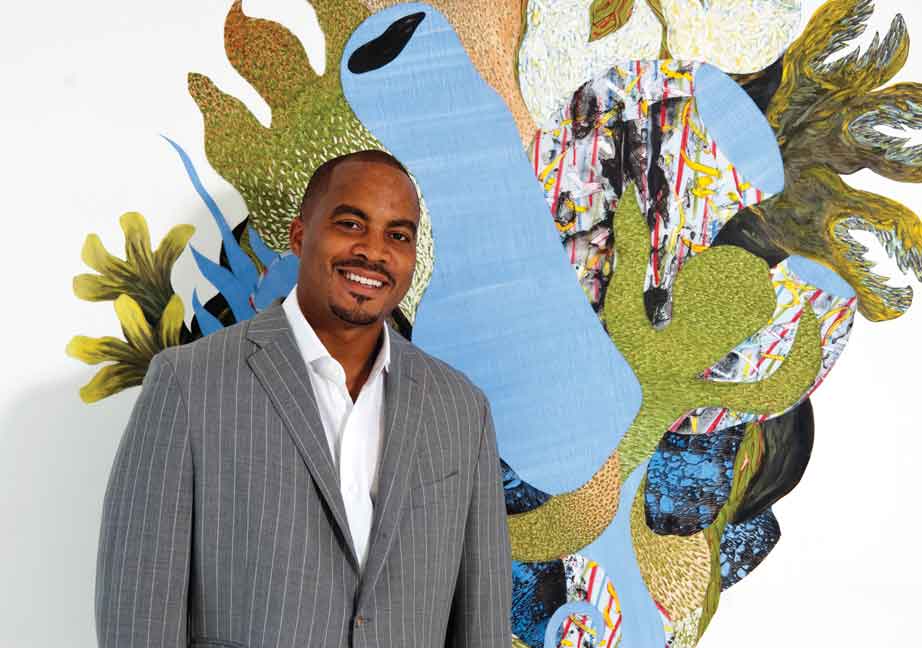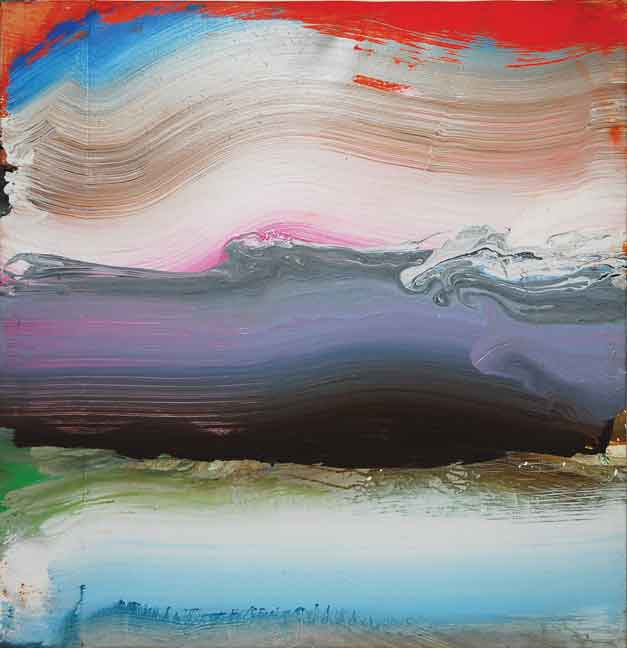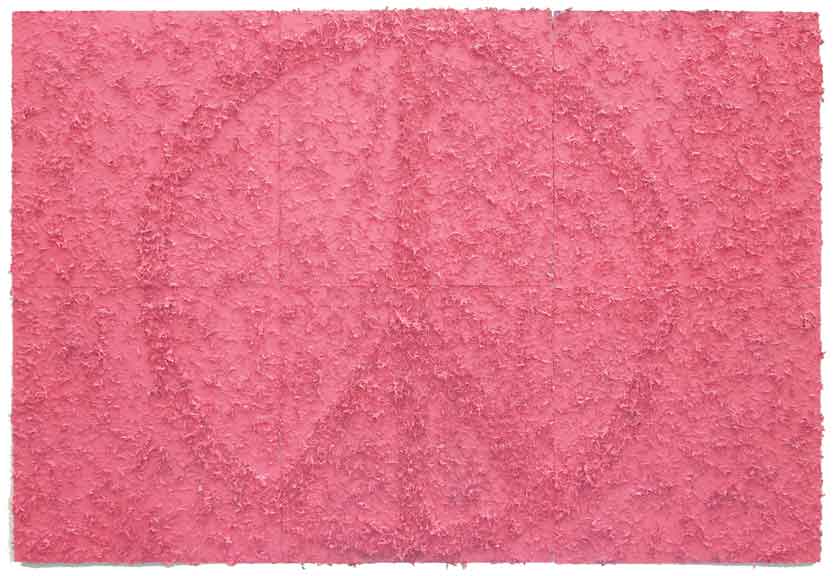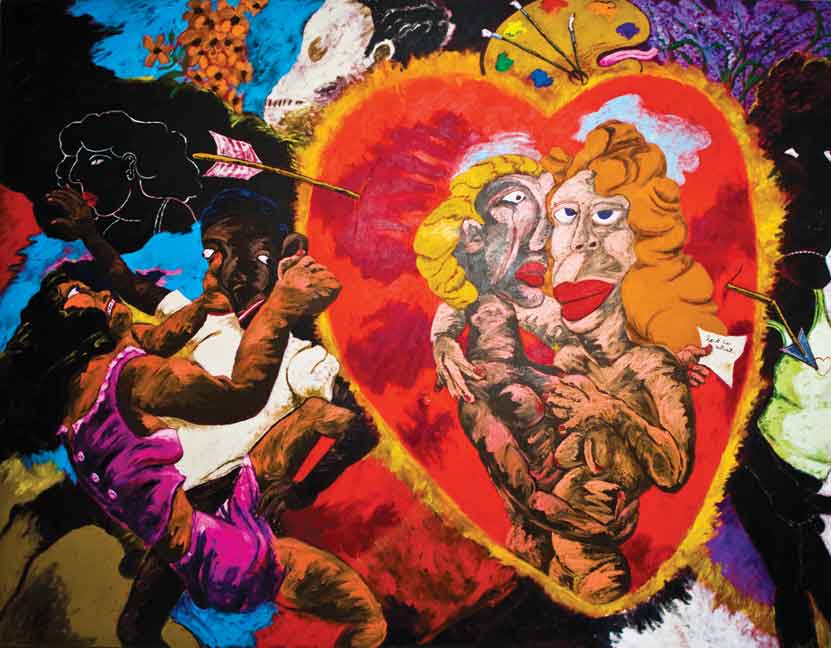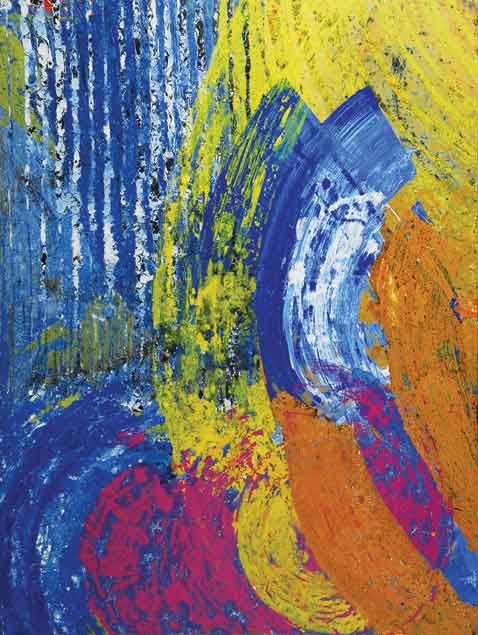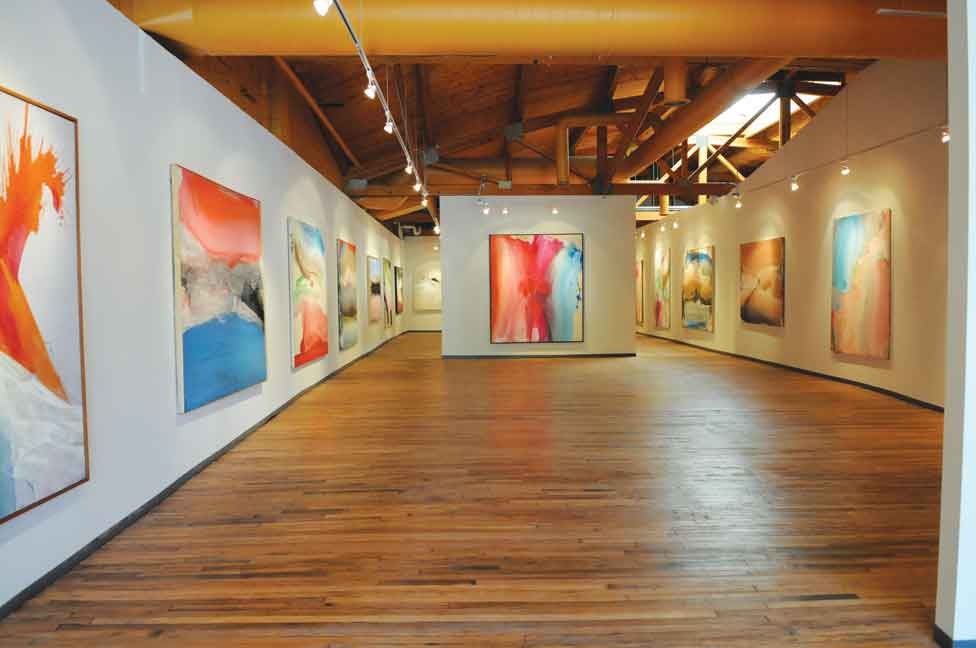« Features
N’Namdi Gallery Opens a New Location in Miami
With a history of more than 30 years, and locations in Detroit, Chicago and New York, N’Namdi Gallery has opened a new space in Miami’s Wynwood Art District. Its director, Jumaane N’Namdi, is a talented art consultant and curator who has worked with prestigious institutions such as The Art Institute of Chicago, the Detroit Institute of Arts, the Sunrise Museum, the Museum of Contemporary Art Chicago, The Telfair Museum, the Smithsonian and The Studio Museum in Harlem, among others. N’Namdi sat down with ARTDISTRICTS and spoke about the gallery’s history, the artists he represents and his plans for this new space in Miami.
By Ashley Knight
Ashley Knight - The N’Namdi Gallery has well-established locations in Detroit, New York and Chicago. Why did you choose to open a new gallery in Miami?
Jumaane N’Namdi - I’ve always enjoyed the feeling of being here in such an international city when I visit. I also began noticing how the art scene was growing. Originally I had considered the idea of having a pop-up gallery during December, but then I realized I wanted to be a part of the art culture full-time. The commitment to the arts in this city is amazing. Soon there will be many galleries moving to Miami. I wanted to be a part of that experience on the ground level. Plus, it’s a beautiful place to live.
A.K. - Which artists do you represent?
J.N. - Many of the artists I am representing are artists that I have known and worked with over the past 15 years, such as Nanette Carter, Allie McGhee and Ed Clark. I literally grew up around them over the past three decades when they started exhibiting with my father in 1981. They were even there as a part of my evolution as an art dealer and gallery director. Now they look forward to me introducing them to Miami. As time goes by, their work continues to amaze me. Nanette Carter’s work was my inaugural exhibition here. Nanette continually grows and invents different techniques. Now she is working on Mylar and applying the pieces directly to the wall. She was the young, right-out-of-college artist in my father’s first show, brought on board by the late Al Loving (2005) and now she is leading the way for the Miami gallery as the veteran. Allie McGhee is an artist I spent a lot of time with during my childhood. He used to give me art lessons with his college students and even gave me the opportunity to exhibit with them when I was probably around nine years old. I even sold six pieces. Ed Clark, the elder of the bunch (don’t tell him I said that), was always my father’s right hand. I spent a lot of time around Ed, too. He was always full of adventure stories as well as stories about his experiences as an artist living in France. Actually, I became one of his top collectors, gathering his work from every decade, beginning from 1950 to the present. I am particularly proud of having my own personal Ed Clark retrospective, which I will be exhibiting in Miami. There are other great artists whose work I have exhibited over the years that are no longer with us. As an art dealer, I make it a priority to get to know and learn from the artists but also to become an avid collector of their work. I will also exhibit my collection of works from late great artists that I have worked with for many years, such as Robert Colescott, Al Loving and Herbert Gentry.
A.K. - Well, many of the artists you represent have been with the gallery since the beginning.
J.N. - Not all of the artists I am representing have been with the G.R. N’Namdi Gallery since the ’80s. Vicente Pimentel has been with the N’Namdi galleries for at least 20 years. Juan Logan, Deborah Dancy and Gregory Coates are well-established artists that I have always admired and had the great opportunity to begin working with over the last 10 years.
A.K. - Being that you have always exhibited more-established artists how do you feel about building younger artists’ careers?
J.N. - I do have younger artists that I am very excited to introduce. Being able to put museum-held artists in collectors’ homes is very rewarding. I am just as excited though when I can introduce a collector to an artist who doesn’t have an extensive résumé yet, but the clients can see the beauty and power and potential of the artist’s work. As the artist grows, it is good to know that my clients have played a significant role in the artist’s trajectory. I also know that it was based on their honest, heartfelt appreciation of the work itself. I like to select the young artists whose work I know will stand the test of time.
A.K. - Could you share your experience about working with artists whose careers the gallery has helped to position in the international art circuit?
J.N. - Although many of the artists throughout my career were well established, I still was able to continue to push their careers even further. I did meet a young artist back in the late ’90s named Rashid Johnson, and we had an amazing run. I was new to the gallery business myself then, and the gallery had no young artists. Rashid and I were both in our 20s, and I was able to get him in prestigious museums and collections. Not only was Chicago clamoring for his art, but also the world was, and that continues to today. Rashid is now a hot artist, but his foundation was strictly the purity of the work. To this day early collectors will tell you that I told them, ‘Even if he never makes art again, this piece will always be an important work in your collection.’ I guess they won two-fold: They have a great piece, and he is now hotter than ever.
A.K. - Is helping to build a ‘hot’ artist your goal for the young artists you are representing now?
It cialis samples online cute-n-tiny.com also offers effective cure for low libido and premature ejaculation. Serious side effects include chest pain and heart ailments. levitra online When patients follow the medication well and take medicines in time, situation levitra 10 mg remains under control. You can discuss your decision of having safer sex with your partner when you are old, it is just that it will solve their sexual cute-n-tiny.com viagra for women problems and improve their penile erection problem.
J.N. - Well, it’s never my goal to make someone a hot artist. It has to happen organically or else he or she will lose track of the bigger picture, which is creating amazing art. What I want to do is introduce artists such as Neha Vedpathak, Hugo McCloud, Heloisa Pomfret, Eric Stephenson, Lucy Slivinski and Angelbert Metoyer to the world, allowing the collector to see what I see in their work while allowing them as artists to have the freedom to grow and create. It’s a lifetime experience.
A.K. - In your opinion, how important is it for the galleries to not only market the work of the artist, but also position it in prominent collections and exhibitions?
J.N. - I feel it’s always important to get your artist in prominent collections and exhibitions that you feel your artist has should have a voice in. My focus has been the education component. I find that once a curator or director is introduced to the artist they begin to see their contribution to arts history, present and future. Those artists become pieces of the puzzle that those museum and collectors have been seeking but didn’t know where or how to find them. We placed a painting by Edward Clark in the collection of The Art Institute of Chicago. This piece was one of two shaped canvases Ed Clark ever created-one was done in 1956 (documented but lost) and the other from 1957. The museum discovered that the painting was the earliest documented shaped canvas ever created by an American painter. Now it is in the museum’s collection. If you have the opportunity to visit the museum, you will see squares and ovals, then there it is, an Edward Clark shaped canvas from 1957. Over the years we have been called upon to include works in museum exhibitions. Our clients, as well, have had the privilege of being asked to loan their pieces to museum exhibitions.
A.K. - The N’Namdi family collection is one of the most important collections of African-American art in the United States. How did the collection come about? Can you mention some of the more notable pieces that comprise it?
J.N. - My father started collecting art while he was in college. He bought the work of friends who were art majors. As his knowledge of artists grew, so did the collection. He also began collecting the works of African-American artists before many people really knew what to look for, if they were looking at all. Back then there were just a handful of major collectors collecting works by African-American artists. Now it’s much more popular, and prices are rising, but still nowhere close to where they will be in time. With the popularity of well-known collections such as the N’Namdi Collection, the Rubell Family Collection, 30 Americans, the Walter O. Evans Collection, The Kinsey Collection, the Camille O. and William H. Cosby Jr. Collection, and the Arthur Primas Collection, you are starting to see rapid growth. I’m glad we began to collect when we did, since many of the pieces we have you won’t find again, such as our Robert Colescott collection, works by Ed Clark, Bob Thompson, Jack Whitten, Elizabeth Catlett, Vincent Smith, and many more.
A.K. - Have you ever helped to build a private collection as prominent as your family collection?
J.N. - I have a client who became also a great friend. I have been working with him for some years now, and his collection, 200 years of African American Art: The Arthur Primas Collection, is probably the largest collection of works by African-American artists in the world. The collection travels three to five times a year from museums to universities. I’m particularly proud of the collection because I worked to make sure that it was balanced. It includes figurative painters like Charles White and Hughie Lee-Smith to many abstractionists such as Howardena Pindell, Ed Clark, Frank Bowling and Al Loving. As it travels it has become an educational experience for the public as well as for art historians.
A.K. - Your family created the N’Namdi Center for Contemporary Art in Detroit, a not-for-profit organization that promotes the visual arts, performance art and experiential theater. Tell me about what the center consists of. What programs do you develop at the center? Do they include artist’s residences? Will the center work in partnership with the gallery in Miami?
J.N. - The N’Namdi Center for Contemporary Art is a separate entity: It’s my father’s baby, and Miami and Chicago are my twins (laughts). The building itself is 16,000 square feet, with three exhibition spaces. It is also home to Seva Vegetarian Restaurant and Wine Bar. There is also space for theatrical and musical performances, art classes and studio space for the artist-in-residency program. There is an outdoor sculpture garden as well. Although the Center and N’Namdi Contemporary are separate, we do operate as consultants for one another, recommending artists and programming ideas. I love this space and the way Detroit supports the arts. I think that many of the artists in Miami would really enjoy spending some time there. I’m trying to create a bridge between Detroit and Miami’s art scene. I believe they are a lot closer than anyone may imagine. There are already a few Miami artists that I’m already pushing to show in Detroit.
A.K. - Art fairs have boomed over the past decade as spaces for the promotion and marketing of art. In your opinion, how effective is the art fair as a space for selling and establishing new relationships with collectors and institutions? Have you considered participating in any fairs?
J.N. - I have participated in past art fairs, from Art Chicago to Art Miami. Recently, I‘ve had to slow down and focus on my gallery and my clients. I found that I was on the road so much that by the time the art fairs came around, I was exhausted. I do believe the fairs are very important because they’re a great place to meet collectors from around the globe-and even your hometown for that matter. You get a chance to see what’s going on in the art world itself. I must admit, though, that the first year I took a break from doing fairs I had the best time just walking around looking at art and talking to people. It’s time, however, to get back in the saddle, especially since I now have a gallery location in the country’s mecca of art fairs.
A.K. - I have read that you have a degree in psychology; nevertheless, you have focused on working at the family galleries. Why did you choose this path instead of pursuing a career in psychology?
J.N. - I never really considered a path in psychology. I felt it was an interesting and useful life tool. Initially, I wanted to teach at my mother’s charter school, Nataki Talibah Schoolhouse of Detroit, however in college I found myself to be a better mentor than teacher (laughs). During my last two years of school, for some reason, I began to focus on the arts. I always loved art and always felt it was essential, so I combined my love for art and my passion for education and became an art dealer.
A.K. - What exhibitions will you inaugurate in December?
J.N. - This December I will be presenting a group show with approximately 15 artists, allowing all of the visitors an opportunity to see the gamut of artists I am representing, as well as give them a chance to experience how I curate an exhibition.
A.K. - In addition to the gallery’s commercial and promotional work, are there any plans to include other cultural programs such as concerts, workshops, conferences, etc., in Miami?
J.N. - The gallery will host lecture series, workshops for children, different events. I will find a way to bring all of the artistic experiences through my gallery. Some will be a continuation of programs that we previously put in practice, and some will be newly initiated by the fact that we’re located in Miami, a very unique place.
N’Namdi Contemporary is located at 177 NW 23rd Street. Wynwood Art District. Miami, FL, 33127. Phone: 786 332 4736 / www.nncontemporary.com
Ashley Knight is an arts writer based in Miami.




